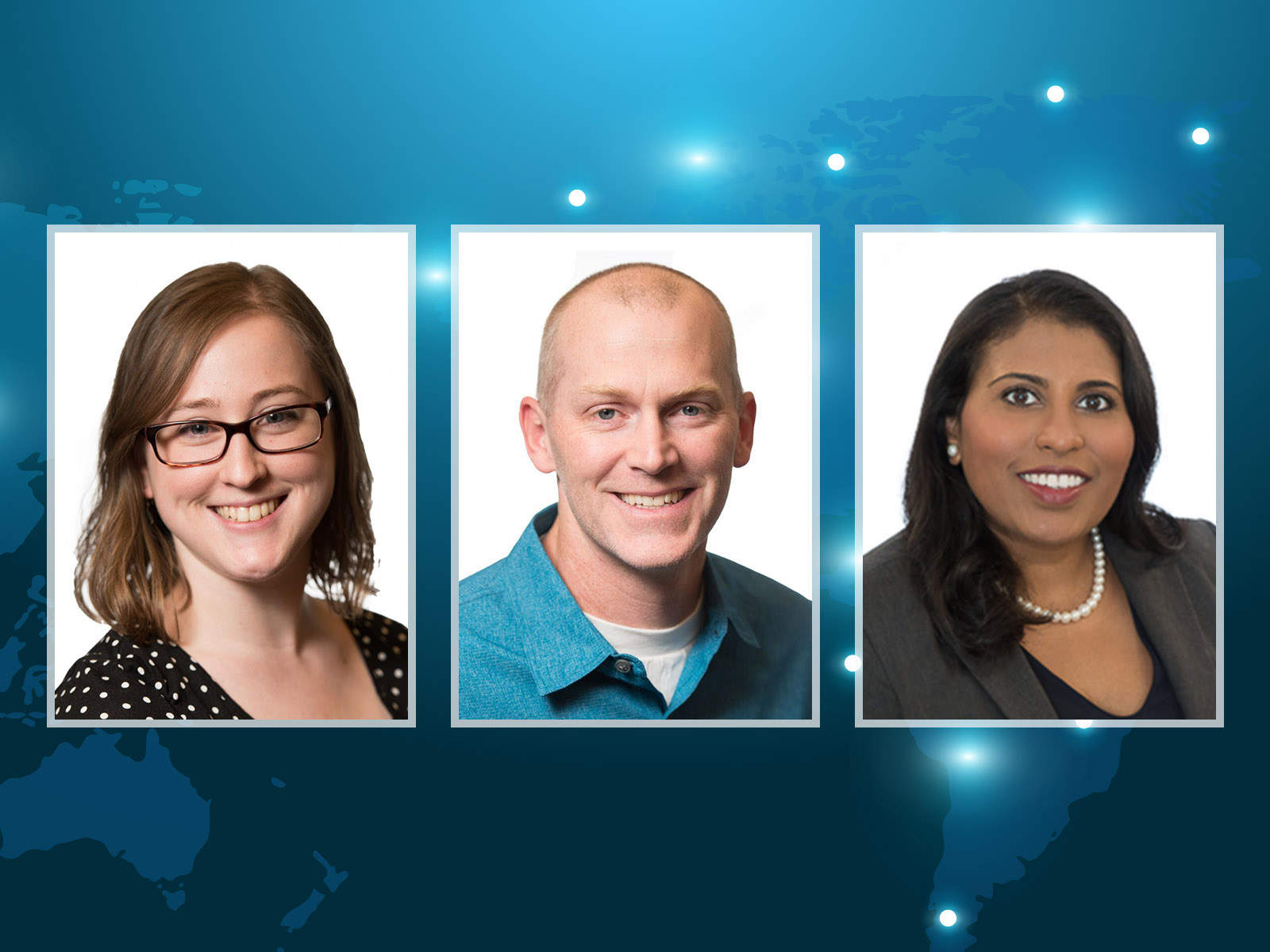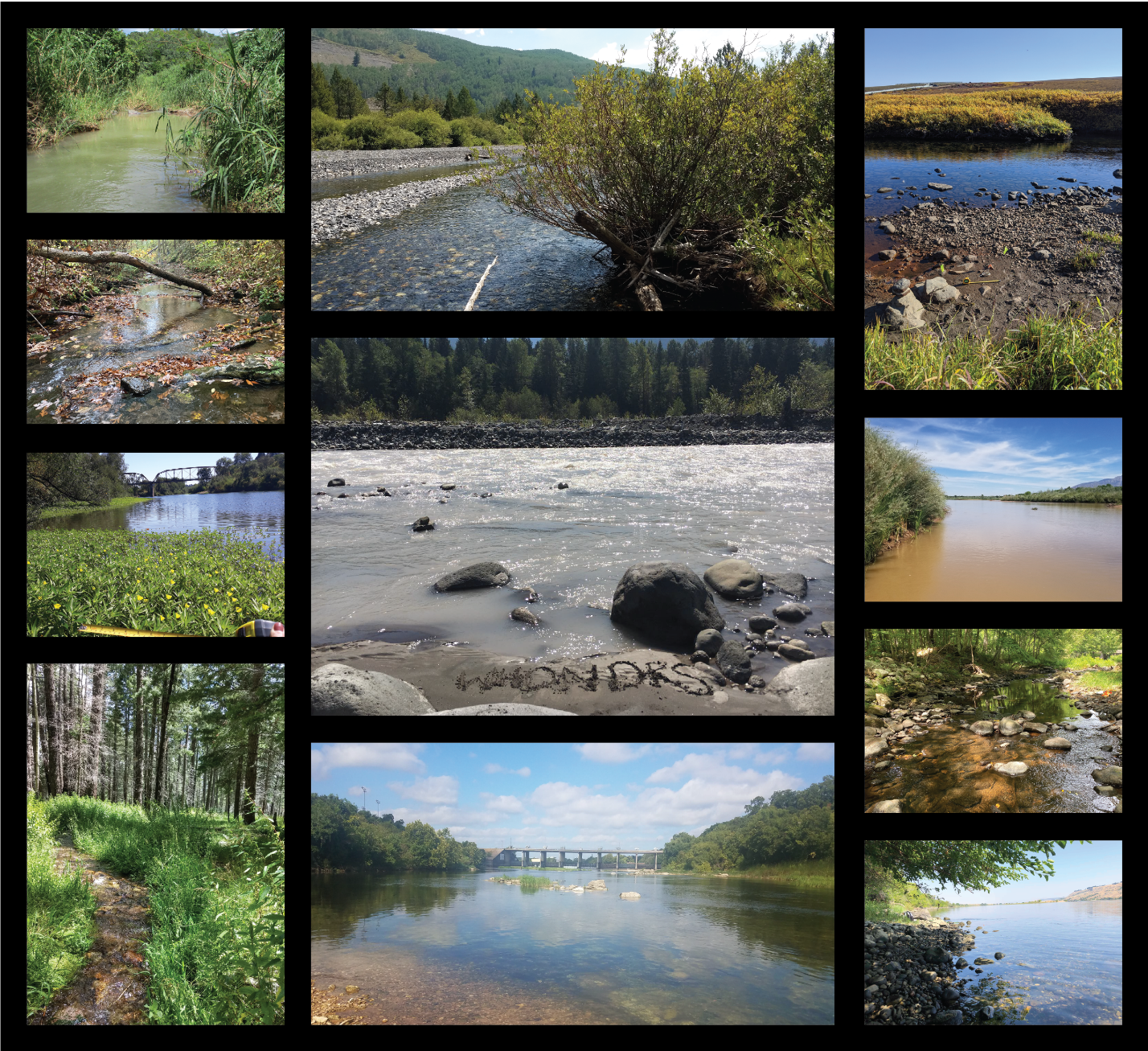It all started with an observation.
Earth Scientist James Stegen, who studies the microbes, chemistry, and water in rivers, noticed something peculiar about the way research was being done in his field.
"Some of the most impactful science happens when research efforts from multiple teams are put together to do something that is more than the sum of individual parts," said Stegen. "But this kind of synergy usually happens after individual research efforts are designed and completed." That is, scientists generally do not intentionally design research efforts in a way that assures the outcomes can be synthesized across research teams and disciplines, and that meets the needs of stakeholders beyond the immediate research team. There are ways to be more intentional in the design of research efforts to increase impact and mutual benefit; ICON science is one of those ways.
"We need to be more intentional in how we design and implement research efforts so that others can easily connect with and take value from what is produced," said Stegen. "This requires fundamentally rethinking how we do science. We need a paradigm shift in how science is done writ large."
To meet this challenge, he partnered with fellow Pacific Northwest National Laboratory (PNNL) Earth Scientist Amy Goldman and U.S. Department of Agriculture, Agricultural Research Service Strategic Innovation Advisor Sujata Emani to find a way to catalyze this much-needed transition. In turn, the three created the ICON Science Cooperative. The cooperative is built around four key principles in which research efforts are intentionally built to be Integrated, Coordinated, Open, and Networked. It is meant to enable researchers from all domains of science to use ICON principles to accelerate development of transferable understanding and outcomes that are mutually beneficial across a broad range of stakeholders. The cooperative will be officially launched during a townhall at this year's American Geophysical Union (AGU) Fall Meeting.

Integrated-Coordinated-Open-Networked
In 2016, a group of researchers created the FAIR principles-findability, accessibility, interoperability, and reusability-for data management and stewardship. Goldman and Stegen applied these principles to their Worldwide Hydrobiogeochemical Observation Network for Dynamic River Systems (WHONDRS) project data, but realized that these powerful principles could be complemented with additional principles to achieve the necessary redesign of the scientific process.
They partnered with Emani to integrate "open science" into the design of their watershed research project. From there, they worked with additional collaborators, including Kelly Wrighton from Colorado State University and Eoin Brodie from Lawrence Berkeley National Laboratory, to organize a workshop to discuss the best practices around designing open research projects across disciplines in watershed studies. It was during this workshop that the ICON principles came into fruition.
The ICON principles are heuristic tool in which research is purposefully designed to be Integrated across disciplines; Coordinated with consistent protocols; Open across the entire research life cycle; and Networked whereby a broad range of stakeholders-from other researchers to the local community-design, implement, and benefit from the work. These principles incorporate the FAIR principles into the "Open" component, but move beyond the data-centric focus of FAIR and into the fundamental design of how research is being done.
Goldman, Emani, and Stegen knew they needed to understand how ICON principles are currently used and how they could be better used in the future. To begin down that path of understanding, it was natural to start with their own community, the geosciences. Along with Lina Pérez-Angel from the University of Colorado Boulder and Josué Rodríguez-Ramos from Colorado State University, they initiated a special collection of openly crowdsourced manuscripts. They invited researchers working in disciplines that align with any of AGU's 25 sections to describe their perspectives on ICON science. The collection is named "The Power of Many: Opportunities and Challenges of Integrated, Coordinated, Open, and Networked (ICON) Science to Advance Geosciences." Many of the contributed manuscripts can currently be accessed via AGU's preprint server.

ICON in action: the WHONDRS consortium
WHONDRS is a global consortium of researchers studying and connecting physical, chemical, and biological processes occurring within and among river corridors. It is designed as a resource for and by the river corridor science community. Goldman and Stegen co-lead WHONDRS, and they-along with the broader WHONDRS team-bring together all four ICON principles in the design of WHONDRS research efforts. For WHONDRS to be successful as a resource, the WHONDRS team knew they needed to assure mutually beneficial outcomes for those within and beyond the WHONDRS consortium. To do so, they developed the initial vision of the ICON principles and use them as a guiding heuristic throughout everything that WHONDRS does.
For example, WHONDRS is Integrated by bringing together hydrology (a physical property), organic molecules (a chemical property), and microbial metabolism (a biological property). Doing so allows for more holistic understanding of river corridor hydro-biogeochemical processes, relative to studying any piece by itself. WHONDRS efforts are Coordinated by developing and freely providing standardized sampling kits along with standardized sample analysis and data-publishing methods. This allows researchers to develop knowledge that applies across diverse river corridors; such transferability in understanding is key for developing models that can predict the impacts of disturbance. WHONDRS strives to be Open throughout the research life cycle, from ideas to data, analysis, and manuscript development. This allows global brain power to be used to solve difficult challenges, instead of relying only on disconnected teams, and also provides the opportunity for anyone to (re)use WHONDRS-generated data. Lastly, WHONDRS is Networked whereby new research efforts are designed openly with a broad range of stakeholders. This allows for modifications to study designs to assure that outcomes are mutually beneficial to both the WHONDRS team and other stakeholders beyond that team.

Enabling ICON science for all
Through their experiences with WHONDRS, Goldman and Stegen know that using ICON principles has a lot of value but is also challenging. They are working to reduce the challenges and maximize the benefits by teaming up with Emani to launch the ICON Science Cooperative. The Cooperative is in place to study, improve upon, and facilitate the use of ICON principles across all domains of science.
"This is still an evolving process," said Goldman. "We established the Cooperative as a way to help people use ICON principles and are actively soliciting feedback from the community on the resources, values, and best practices that should be incorporated into ICON."
"We also want to show that doing research in this manner-using these principles-is more attainable in all scientific disciplines than previously believed," said Emani.
The ICON Science Cooperative and WHONDRS are supported by the Department of Energy (DOE), Biological and Environmental Research (BER) program, as well as by the Environmental System Science, Scientific Focus Area project and a DOE Office of Science Early Career Research Program project, led by James Stegen, both at PNNL. The ICON Science Cooperative is also supported by the U.S. Department of Agriculture, Agricultural Research Service.






